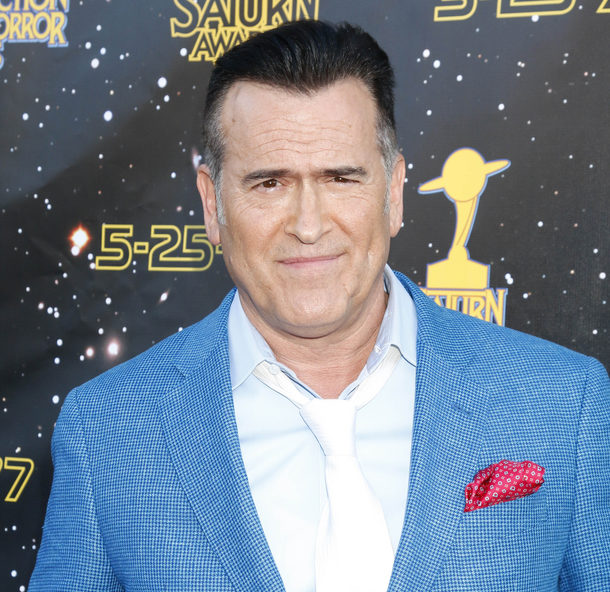#Netflix, USC Annenberg Content Study Reveals More Than Half of Streamer’s Film, TV Series Are Led by Women

Women and girls are featured in more than 60 percent of stories and were over half of the leading and co-leading roles in Netflix content in 2021, according to the streamer’s second film and TV series diversity study.
Released on Thursday, the Inclusion in Netflix Original U.S. Scripted Series and Films report also indicates increases in LGBTQIA+ leads and co-leads since 2019. But the invisibility of certain women of color continues on the platform, alongside those with disabilities who remain starkly underrepresented in Netflix programming.
The study, which provides new data on programming aired between 2020 and 2021, is the latest look at the streamer’s content as it relates to gender, race/ethnicity, LGBTQIA+ and disability representation across live-action, scripted films and series. The findings — which the streamer commissioned from the USC Annenberg Inclusion Initiative and agreed to release every two years through 2026 — focus on onscreen storytelling and track certain access and opportunities behind the camera.
One of the biggest takeaways from this year’s report was the significant gender progress across TV and film for Netflix when it comes to leading and co-leading roles. While just 34 percent of Netflix live-action scripted content across four years has portrayed a gender-balanced story, almost two-thirds of movies and 57 percent of series in 2021 alone depict a girl or a woman “driving the action,” says Dr. Stacy Smith, founder of the USC Annenberg Inclusion Initiative.
“[Netflix], in their storytelling across U.S. originals in film and series, is a female-driven company. I’ve never said that before,” Smith tells The Hollywood Reporter. “You’ve got [Netflix head of film] Scott Stuber at 64 percent of films featuring a female lead or co-lead. And [Netflix chief content officer] Bela [Bajaria] has been at proportional representation the whole time that we’ve been doing this report. Who’s doing that around town?”
A notable element of this data is that it’s not just women who are creating more opportunities for representation, Smith explained during an hourlong presentation of the study featuring the Annenberg Inclusion Initiative founder, mega-producers Shonda Rhimes and Tyler Perry, as well as Netflix executives Stuber and Bajaria.
“Women behind the camera have long advocated for and directed stories with female leads and co-leads. But that is not where we’re seeing major gains for onscreen representation from 2018 to 2021. Male-directed stories in film and scripted content have increasingly included women and girls in leading roles,” Smith said. “Clearly, inclusion goals can be met when everyone — men and women — work towards change.”
“I think what’s interesting for us — having come here and started this film division — is we had to lean into original. We don’t have IP, we don’t have those things,” Stuber said, pointing to the western The Harder They Fall in his own explanation for Netflix’s success in “aspirational” and inclusive storytelling in the film division. “So new stories and different aspects of how to tell them is really kind of our superpower.”
Other groups are also approaching proportional representation or seeing increases in inclusion within film and TV series on and offscreen. LGBTQIA+ leads and co-leads in small-screen projects reached a high for the streamer among the years tracked in 2020 at 45.6 percent. There was also proportional representation of the LGBTQIA+ community among regular characters in series. When it comes to Netflix films and series that featured racially/ethnically underrepresented leads and co-leads, inclusion reached proportional representation — or around 40 percent — in leading roles, main cast or series regulars and all speaking characters overall.
Bajaria, while discussing a larger conversation around cultural specificity in content, noted that successful Netflix series frequently embrace representation or cultural specificity, while also portraying a universal experience within its narrative. “When I look at a show like Never Have I Ever, to me, it’s an amazing coming-of-age story and an amazing family dynamic. I don’t look at it as only an Indian American show,” she said. “When I look at the show Beef that we just launched, that’s not about being Asian American — happens to have a large Asian cast — but that’s really about humanity and connection and loneliness.”
Offscreen, women made up a full 38 percent of all show creators across scripted series evaluated in 2021 — above the industry norm of 33 percent — and an increase in Netflix’s own hiring percentages for 2018. In film, women occupied 27 percent of all directing jobs, more than double the 13 percent of women holding directing jobs across the 100 top-grossing films of 2021. Underrepresented directors in film also reached a high of 30 percent in 2020, up from 2019’s 20.5 percent and besting the 17 percent representation among the year’s top-grossing films.
Smith also revealed that the Annenberg Inclusion Initiative had evaluated the Metacritic scores for Netflix’s 2020 and 2021 content among four groups of directors: white males, white females, underrepresented males and underrepresented females. These findings, which were not included in the study, showed women and underrepresented directors overperform relative to men, with women of color having “the highest quality and punch[ing] at the highest level as directors in their storytelling prowess.”
However, this representational success is not reaching all groups equally. Offscreen, certain ethnic and racial groups saw few creatives work above the line. In 2021 Netflix films, just 1.5 percent of directors were MENA (Middle Eastern/North African) and none were American Indian/Alaska Native or Native Hawaiian/Pacific Islander. For Latinx creatives, there was no significant changes in behind-the-camera hiring, with representation remaining below population metrics overall.
Onscreen and across stories, the 2023 study found that invisibility persists for girls and women of color across TV and film content. American Indian/Alaska Native, Native Hawaiian/Pacific Islander and MENA female characters suffered the most, with all three missing from 94 percent or more of the streamer’s movies, respectively. For series titles between 2018 and 2021, American Indian/Alaska Native women were missing from 100 percent, while Native Hawaiian/Pacific Islander women were missing from 98 percent.
“A great deal of this inclusion focused on storytelling with Black, Asian or multiracial leads and co-leads, main cast and all speaking characters,” Smith said during the presentation. “These efforts need to continue while focusing on stories and actors from a variety of different racial/ethnic groups. Particularly the ones that we see far less frequently — Indigenous characters, characters that are Latinx, MENA, Native Hawaiian and Pacific Islanders.”
As LGBTQIA characters in leading and co-leading roles increased, along with the percentage of storylines “driven by” them (36 percent), says Smith, “no meaningful differences emerged between 2018 to 2021” in terms of the main cast/series regulars, per the study. Speaking or named characters also did not “deviate meaningfully from 2020 or 2018,” with the majority of LGBTQIA+ speaking characters in 2021 being gay (52.8 percent), followed by lesbian (35.4 percent), bisexual (8.7 percent) and transgender (3.2 percent).
Netflix’s biggest representational hole, however, is around disability, where inclusion is described as both “rare” and “invisible.” According to the report, characters with disabilities did not appear in 72 percent of films and series in 2021 — an increase from 2018’s 55 percent. The majority of what representation there was was “still white and male.”
“You’re seeing an actual boomerang effect,” Smith tells THR. “Not only are there not folks advocating in terms of casting — ensuring that we have onscreen speaking characters that represent a variety of different backgrounds that are being excluded — but people with disabilities onscreen in particular, since 2015, has gone in the opposite direction.”
Perry, a writer, director, producer and studio head, expressed that his lack of a writers room has played a part in whether his work has depicted disability. “My experience is people I’ve noticed, people that I’ve seen. It is something that is spoken to me in some kind of way or another,” he said, responding to a question from THR during the presentation. “So it’s not something that I would consciously shy away from. It’s just not something that’s been a part of my experience that I can write about and feel comfortable that I am doing justice or even being able to understand fully.”
Meanwhile, Shondaland founder and Bridgerton executive producer Rhimes noted that fear — and a lack of asking questions — has impacted her own shows’ willingness to be inclusive in this way. “I think we’ve spent a lot of time on my shows jumping right in and trying really hard to make sure things are representative. I feel like even in my writers rooms that we talk about it, there’s a little bit of fear of getting it wrong,” she said. “But we were telling a story and instead of being afraid, I think you ask the questions, you do the research. People want to see people who look like them on screen.”
If you liked the article, do not forget to share it with your friends. Follow us on Google News too, click on the star and choose us from your favorites.
For forums sites go to Forum.BuradaBiliyorum.Com
If you want to read more Like this articles, you can visit our Social Media category.




